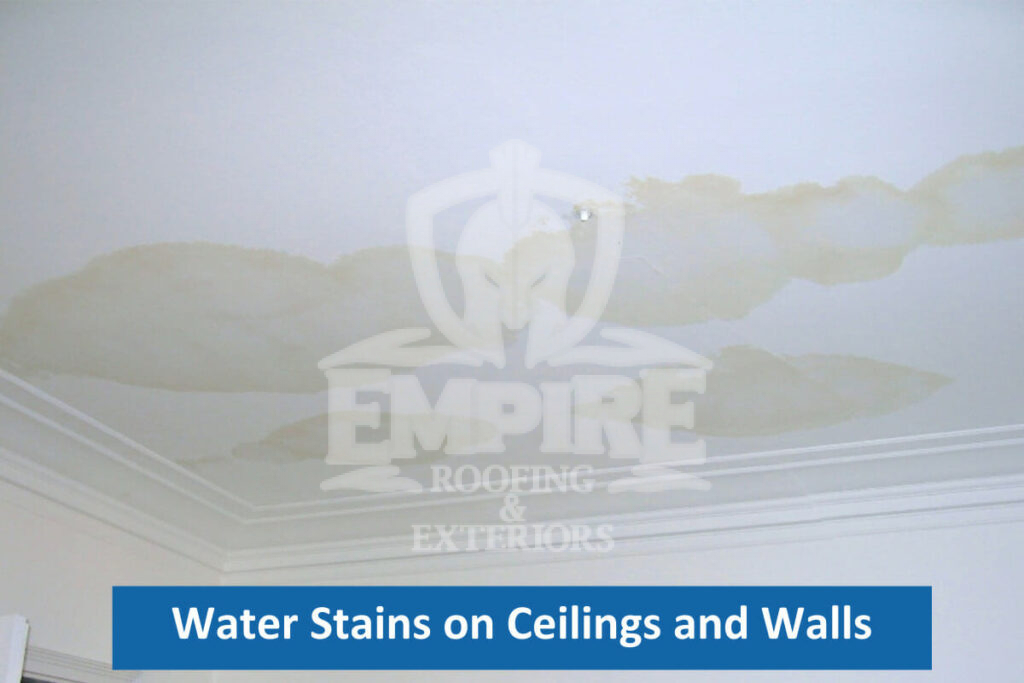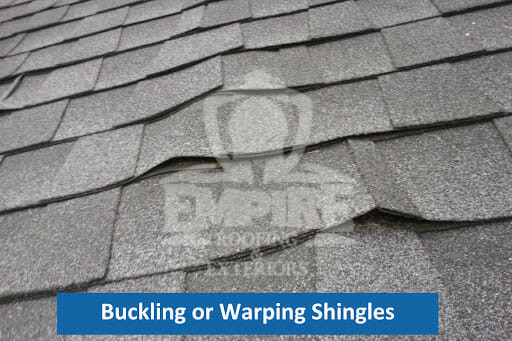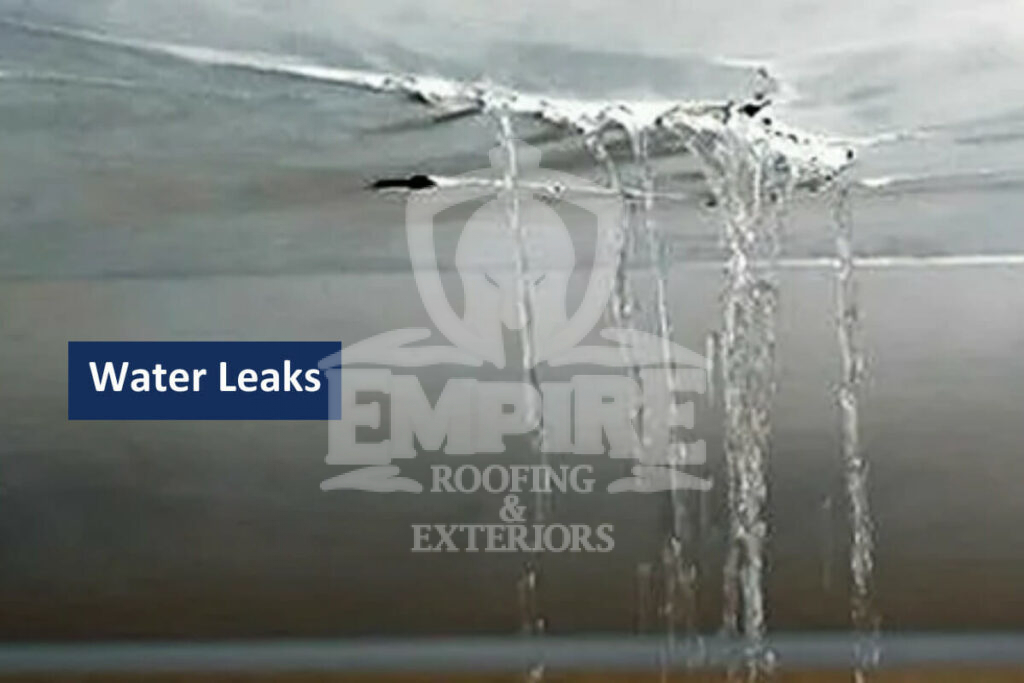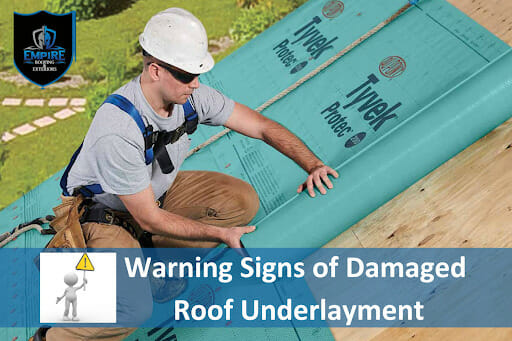The roof of your home stands as a formidable shield, safeguarding your loved ones and belongings from the elements. However, when the crucial underlayment becomes compromised, it opens the door to leaks, water damage, and potential structural issues. Don’t underestimate the significance of roof underlayment damage.
In this all-encompassing guide, we delve into the warning signs that indicate its deterioration. By understanding the red flags and taking proactive steps, you can preserve the strength and longevity of your roof, ensuring continued protection for your cherished home.
10 Alarming Signs Of Underlayment Damage
Underlayment damage can lead to big problems with your roof. But don’t panic! We’ve got you covered. We’ll go through 10 warning signs that you need to be aware of. By catching these signs early, you can save your roof from major headaches down the road.
1. Water Stains on Ceilings and Walls
One of the most apparent signs of damaged underlayment is the presence of water stains on your ceilings and walls. If you notice brown discoloration or water spots in your home, it’s a clear indication that water is infiltrating your roof. The underlayment acts as a waterproof barrier between the roof’s surface and the interior of your home. When it becomes damaged, water can penetrate through it, leading to unsightly stains and potential structural damage. If you see water stains, it’s crucial to address the issue promptly to prevent further deterioration.

2. Damp or Musty Odors
Another telltale sign of roof underlayment damage is damp or musty smells in your home. When water seeps through the roof due to damaged underlayment, it can lead to mold and mildew growth. These microorganisms thrive in damp environments and emit a distinct musty smell. If you notice any unusual odors in your home, particularly in areas close to the roof, it’s essential to investigate further. Mold and mildew not only pose health risks but can also indicate underlying roof problems that require immediate attention.
3. Buckling or Warping Shingles
Inspecting your roof’s shingles is crucial for identifying potential issues with other parts. Roof underlayment damage can cause the shingles to buckle or warp, creating an uneven and unattractive appearance. If you notice any shingles that appear raised, distorted, or out of place, it’s a sign that the underlayment beneath may be compromised. These damaged shingles expose your roof to further water damage and may require prompt repair or replacement to prevent more extensive issues.

4. Missing or Damaged Flashing
Flashing is the material used to seal joints and transitions on the roof, such as around chimneys, vents, and skylights. Damaged underlayment can compromise the integrity of the flashing, leading to water intrusion. Be sure to inspect your flashing for any signs of damage, such as cracks, gaps, or missing sections. If you notice any issues, it’s crucial to repair or replace the flashing promptly to prevent water from seeping into your home through these vulnerable areas.
5. Increased Energy Costs
A sudden increase in your energy bills can be an indication of damaged underlayment. When the underlayment fails to provide proper insulation, it allows air to escape, making it harder for your HVAC system to maintain a consistent temperature. As a result, your heating and cooling bills may skyrocket. If you notice a significant increase in your energy costs without any other apparent explanation, it’s worth considering the condition of your roof’s underlayment as a potential culprit.
6. Roof Leaks and Water Intrusion
Perhaps the most obvious sign of underlayment damage is the presence of roof leaks and water intrusion. If you notice water dripping from your ceiling or pooling on your floors during or after rainfall, it’s a clear indication that your underlayment is compromised. Roof leaks can cause significant damage to your home’s structure, insulation, and belongings. It’s crucial to address these leaks promptly to prevent further deterioration and potential mold or mildew growth.

7. Sagging or Uneven Roof Surface
A sagging or uneven roof surface is a red flag for damaged underlayment. When the underlayment becomes compromised, it can allow moisture to penetrate the roof’s structure, causing the underlying materials to weaken and sag. If you notice any areas of your roof that appear to be sagging or uneven, it’s important to have a professional inspection to assess the condition of the underlayment and determine the appropriate course of action.
8. Light Coming Through The Attic
When light filters through the attic, it serves as a telltale sign that the underlayment of your roof may be damaged. As sunlight penetrates through gaps or cracks in the roofing material, it illuminates the otherwise dark attic space. This occurrence suggests that the underlayment has suffered deterioration or is no longer intact. If you notice rays of light infiltrating your attic, it’s advisable to inspect and address the condition of your underlayment promptly to ensure the integrity and longevity of your roof.
9. Increased Pest Activity
Damaged underlayment can create entry points for pests such as rodents, insects, and birds. These creatures can exploit weaknesses in the roof’s structure to gain access to your home. If you notice an increase in pest activity or hear scratching or scurrying sounds coming from your attic or walls, it’s essential to investigate the condition of your underlayment. Repairing the underlayment and sealing any entry points can help prevent further pest infestations and protect your home from potential damage.
10. Age of the Roof
Lastly, the age of your roof can be a significant factor in determining the condition of the underlayment. Most underlayment materials have a limited lifespan, typically ranging from 15 to 30 years. If your roof is approaching or exceeding its expected lifespan, it’s crucial to have a professional inspection to assess the condition of the underlayment. Even if you haven’t noticed any visible signs of damage, an aging roof may still require underlayment replacement to maintain its protective capabilities.
If you want to learn more, check out our blog post on best roof underlayment.
Conclusion
The warning signs of roof underlayment damage should never be ignored. It’s important to note that different types of roof underlayment, such as asphalt-saturated felt or synthetic materials, may exhibit varying warning signs when damaged. Regardless of the specific type, the key is to remain vigilant and address any signs of compromise promptly. By staying proactive and taking swift action, you can ensure the long-term durability and protection of your home.
Don’t underestimate the significance of a strong and intact roof underlayment—reach out to the experts at Empire Roofing & Exteriors today! Contact us at (225) 347-8877 for a comprehensive roof inspection and necessary repairs. Prioritize the well-being of your home and enjoy peace of mind knowing that it is effectively shielded from nature’s elements.
